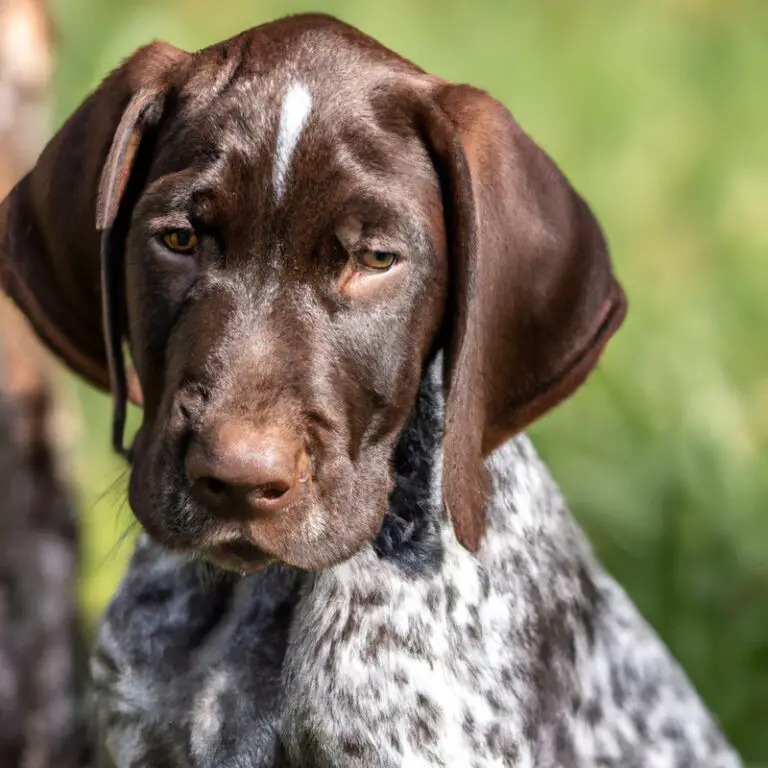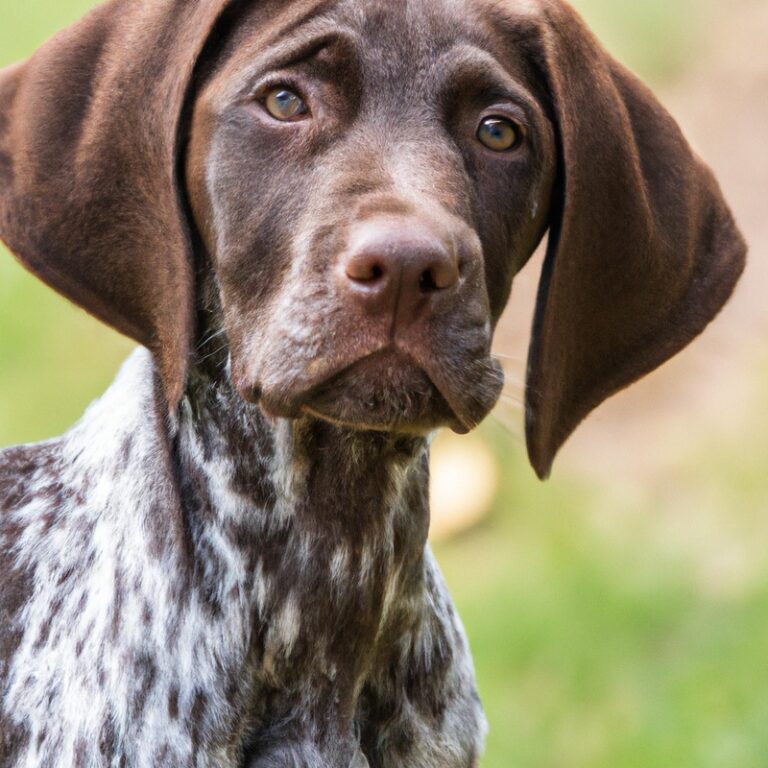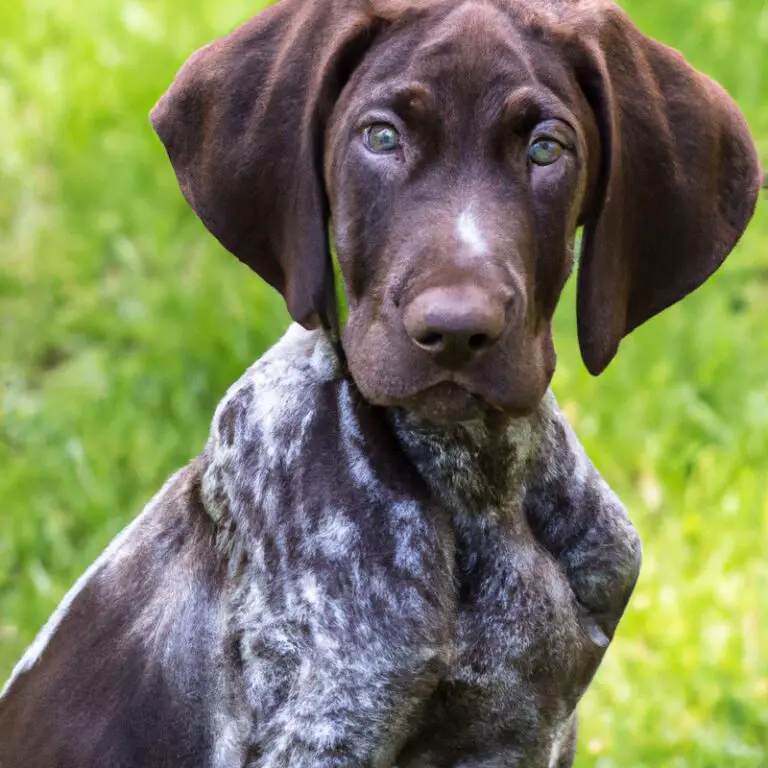How Can I Prevent My German Shorthaired Pointer From Resource Guarding?
Key Takeaways:
- Early socialization and training can help prevent resource guarding behaviors in German Shorthaired Pointers.
- Providing a consistent and structured environment can reduce the likelihood of resource guarding incidents in this breed.
- Using positive reinforcement training techniques can be effective in addressing resource guarding issues in German Shorthaired Pointers.
- Seeking professional guidance from a dog trainer or behaviorist can be beneficial in managing and preventing resource guarding behaviors in this breed.
Are you struggling with your German Shorthaired Pointer’s resource guarding behavior? Don’t worry, you’re not alone.
Resource guarding, where a dog becomes possessive over things like food, toys, or territory, is a common issue among our furry friends.
But fear not, because I’m here to lend you a helping paw! As an expert in dog behavior, I’ve seen it all, and I’m here to share proven prevention strategies to nip this problem in the bud. From early socialization and training to creating a positive and trusting relationship with your furry buddy, I’ve got you covered.
So let’s dive in and learn how to curb resource guarding tendencies in your German Shorthaired Pointer once and for all!
| Possible Causes of Resource Guarding: | Preventive Measures: |
| Lack of socialization or early exposure to different stimuli | Ensure early and positive socialization experiences. Expose your dog to different people, dogs, and environments from an early age. |
| Fear or anxiety | Address any fears or anxieties your dog may have through positive reinforcement training and desensitization techniques. Consult with a professional dog trainer or behaviorist if needed. |
| Prior negative experiences | Create positive associations by rewarding your dog with treats or praise when approaching or interacting with their resources. Avoid punishment for resource guarding behavior. |
| Possessive or dominant tendencies | Establish yourself as the leader by providing consistent rules and boundaries. Teach your dog to “drop it” or “leave it” on command. |
| Insufficient exercise or mental stimulation | Provide regular exercise and engage your dog in interactive games and mental enrichment activities to channel their energy and prevent frustration. |
| Other dogs or pets in the household | Separate resources (food, toys, etc.) and feed or supervise interactions between dogs to prevent competition and resource guarding. |
Understanding Resource Guarding in German Shorthaired Pointers
What Is Resource Guarding and Why Do Dogs Engage in It?
Resource guarding is a behavior that some dogs exhibit when they try to protect their valuable possessions like food, toys, or even their favorite spot on the couch. It’s their way of saying, “Hey, this is mine, back off!” But why do dogs engage in this behavior?
Well, resource guarding can stem from various reasons.
One common cause is a fear of scarcity, where dogs may have experienced limited access to resources in the past. They might feel the need to guard what they have because they’re worried it might be taken away.
Another reason is the instinctual nature of dogs.
In the wild, dogs have to compete for resources to survive. So, guarding their possessions is a natural behavior for them.
Sometimes, dogs may resource guard due to insecurity or anxiety.
They might feel the need to control their environment, especially if they’re unsure of their place within the family hierarchy. Understanding why dogs engage in resource guarding is the first step towards addressing and preventing this behavior.
By creating a safe and trusting environment for your dog and providing them with plenty of positive reinforcement, you can help them feel more secure and less inclined to guard their resources.

Common Signs of Resource Guarding in German Shorthaired Pointers
Common Signs of Resource Guarding in German Shorthaired Pointers So, let’s talk about resource guarding in German Shorthaired Pointers. These dogs can sometimes exhibit signs of guarding their belongings, which can be an issue if not addressed.
Here are some common signs to look out for:
- Growling or snarling when someone approaches their food bowl, toys, or other possessions.
- Showing tense body language, such as stiffening or freezing, when someone comes near their belongings.
- Becoming defensive or aggressive when someone tries to take away their toys or food.
- Possessive behavior, like hovering over their belongings, growling, or even snapping at others who come near.
It’s important to note that resource guarding can vary in severity from mild to more intense. If you notice any of these signs in your German Shorthaired Pointer, it’s crucial to address the issue early on to prevent it from escalating.
Seek guidance from a professional dog trainer or behaviorist who can help you manage and modify this behavior effectively.
With proper training and understanding, resource guarding can be managed in German Shorthaired Pointers.
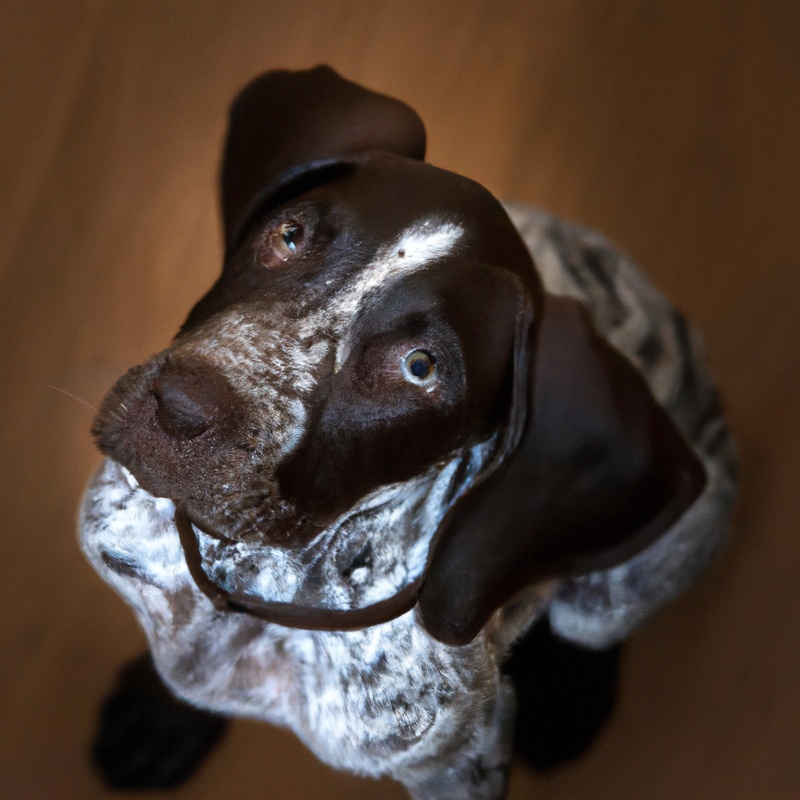
Factors That Contribute to Resource Guarding Behavior
Factors That Contribute to Resource Guarding Behavior Resource guarding behavior in German Shorthaired Pointers can be influenced by several factors. One important factor is a dog’s genetics.
Some dogs may have a natural inclination towards resource guarding due to their genetic makeup.
This means that they may be more predisposed to exhibit this behavior. Another contributing factor is a dog’s past experiences.
If a dog has had negative encounters with others trying to take their resources away, they may develop a protective instinct and guard their possessions.
This can be particularly true if the dog has had limited access to resources in the past. The environment in which a German Shorthaired Pointer is raised also plays a role in resource guarding behavior.
Dogs that have been in environments with scarce resources or high competition may learn to guard their possessions as a survival strategy.
Similarly, dogs that have been consistently reinforced for resource guarding behavior may continue to exhibit it in the future. Lastly, a dog’s overall temperament can contribute to resource guarding behavior.
Dogs that are anxious, fearful, or possessive by nature may be more likely to guard their resources compared to dogs with more relaxed temperaments.
Understanding these factors can help owners address and prevent resource guarding behavior in their German Shorthaired Pointers.
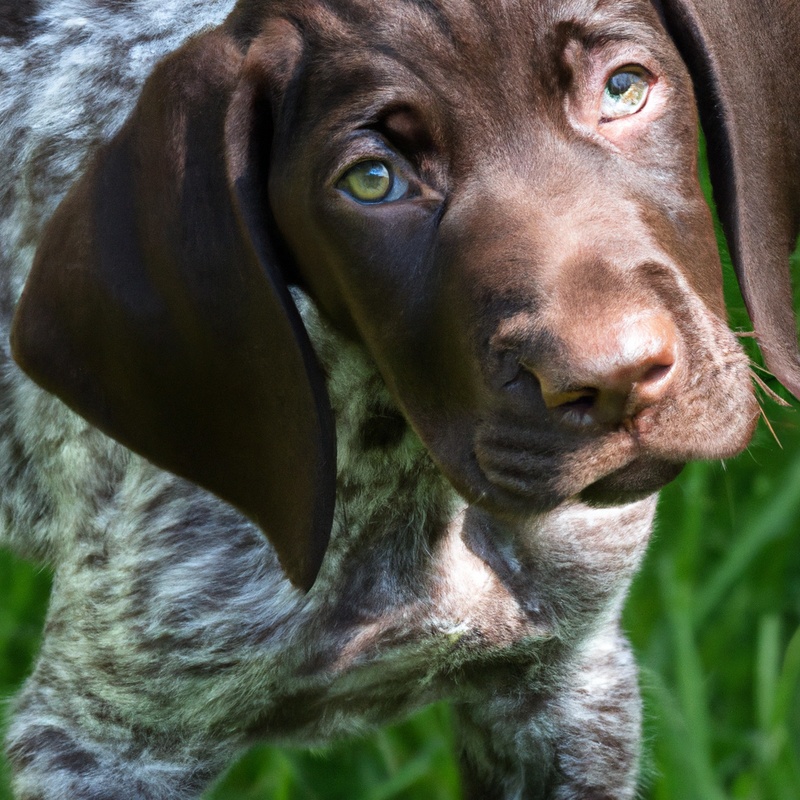
Prevention Strategies for Resource Guarding in German Shorthaired Pointers
Early Socialization and Training
Early socialization and training are essential for preventing resource guarding in German Shorthaired Pointers. Start socializing your puppy from a young age, exposing them to different people, animals, and environments.
This will help them develop positive associations and reduce the likelihood of guarding behavior.
When it comes to training, consistency is key. Teach your puppy basic obedience commands like “sit,” “stay,” and “drop it.” Practice these commands regularly and reward them with treats and praise when they respond correctly.
This will establish a strong foundation of obedience and help prevent guarding behavior.
Additionally, introduce your puppy to handling exercises. Gently touch their ears, paws, and mouth to get them accustomed to being touched and handled.
This will make them more comfortable with people approaching them when they have resources, reducing the risk of guarding.
Expose your puppy to a variety of toys, treats, and food items, and teach them to share willingly. Gradually increase the value of the items they are exposed to, ensuring that they learn to trust that you won’t take things away from them.
This will help prevent possessive tendencies and resource guarding.
By incorporating early socialization and consistent training, you can set your German Shorthaired Pointer up for success and reduce the likelihood of resource guarding behavior in the future. Remember to always be patient, positive, and gentle in your approach.
Teaching and Practicing “Leave It” and “Drop It” Commands
Teaching and practicing the “Leave It” and “Drop It” commands are essential for preventing resource guarding in German Shorthaired Pointers. First and foremost, start by teaching your dog the “Leave It” command.
Hold a treat in your closed hand and say “Leave It.” Once your dog stops trying to get the treat, praise them and give them a different treat.
Repeat this exercise until they consistently respond to the command. Next, move on to the “Drop It” command.
Start by offering your dog a toy or object they enjoy.
When they have it in their mouth, show them a tasty treat and say “Drop It.” As soon as they release the toy, reward them with the treat and offer praise. Practice this command regularly to reinforce good behavior.
Implementing a Consistent Feeding Routine
Implementing a consistent feeding routine is essential when it comes to preventing resource guarding behavior in your German Shorthaired Pointer. By establishing a regular feeding schedule, you can help your dog feel secure and reduce the likelihood of them becoming possessive or aggressive over their food.
First and foremost, choose a specific time for feeding and stick to it every day.
Make sure to follow a predictable routine, as dogs thrive on consistency. This means feeding your German Shorthaired Pointer at the same time in the morning and evening, allowing them to anticipate and rely on their meal times.
Additionally, it’s a good idea to feed your dog in a quiet and calm environment.
Minimize distractions and keep other pets or children away during mealtime to create a stress-free atmosphere. This will help your German Shorthaired Pointer focus on their food and decrease the chances of them feeling the need to guard it.
To further promote a positive feeding experience, consider using food puzzles or interactive toys that can engage your dog mentally and physically.
This not only adds a fun element to their meals but also helps prevent boredom and potential resource guarding tendencies.
Using Positive Reinforcement Techniques
Using positive reinforcement techniques is an effective way to prevent resource guarding in German Shorthaired Pointers. Instead of scolding or punishing your dog for guarding behavior, focus on rewarding and encouraging positive behaviors.
First and foremost, establish a positive and trusting relationship with your dog.
This will create a foundation for effective training. Spend quality time with your dog, play games, and provide plenty of mental and physical exercise.
When it comes to resource guarding, start by teaching your dog the “leave it” and “drop it” commands.
Use tasty treats as rewards and practice these commands in various situations. Gradually increase the difficulty by introducing higher-value items.
Another positive reinforcement technique is to trade items with your dog.
This helps them see that giving up a possession results in something even better. Offer a treat or toy in exchange for the item they are guarding.
This way, your dog learns that sharing is rewarding.
Additionally, practice desensitization exercises by gradually exposing your dog to people and other animals near their resources. Start with low-stress situations and reward your dog for remaining calm and relaxed.
Over time, gradually increase the level of distractions.
By using positive reinforcement techniques, you can create a positive association with sharing and discourage resource guarding behavior in your German Shorthaired Pointer.
Minimizing Access to High-Value Resources
Alright, let’s talk about minimizing access to high-value resources to prevent resource guarding in German Shorthaired Pointers. One effective strategy is to simply limit your dog’s access to these resources.
First and foremost, keep these valuable items out of reach when you’re not actively supervising your dog.
This means closing doors to rooms where these items are stored or using baby gates to block off certain areas. Another good idea is to create a designated space for your dog’s high-value resources, such as special toys or treats.
This could be a separate room or an area in your home that is sectioned off.
By doing this, you can control the environment and reduce the likelihood of resource guarding behavior. If you have multiple dogs in your household, it’s important to provide separate feeding areas and individual toys to avoid conflicts over resources.
This can help prevent the development of resource guarding behaviors.
Providing Mental and Physical Stimulation
Providing mental and physical stimulation is essential for preventing resource guarding in German Shorthaired Pointers. Dogs with plenty of mental and physical exercise are generally more content and less likely to guard their resources.
Here are some ideas to keep your German Shorthaired Pointer stimulated:
- Engage in daily play sessions: Interactive games like fetch, hide-and-seek, or puzzle toys can help stimulate their minds and expend physical energy.
- Implement a training routine: Regular training sessions not only provide mental stimulation but also establish a positive bond between you and your dog. Teach them new tricks or practice obedience commands.
- Offer challenging toys and puzzles: Toys that require problem-solving, such as treat-dispensing toys or puzzle games, can keep your dog entertained for hours. This mental exercise helps prevent boredom and the development of guarding behavior.
- Provide social interaction: Regular socialization with other dogs or supervised playdates allows your German Shorthaired Pointer to engage in appropriate social behaviors and prevent frustration or possessiveness towards resources.
- Rotate their toys: By rotating your dog’s toys, you keep their environment fresh and exciting. It also prevents them from becoming possessive over a specific toy or object.
Additional Tips for Managing Resource Guarding in German Shorthaired Pointers
Recognizing and Avoiding Triggers
Recognizing and avoiding triggers is essential in preventing resource guarding behavior in German Shorthaired Pointers. First and foremost, it’s crucial to understand what triggers your dog.
This can include certain toys, food, or even specific locations.
By paying attention to your dog’s body language and behavior, you can start recognizing these triggers. Once you’ve identified the triggers, it’s important to avoid them whenever possible.
For example, if your dog guards their food bowl, try feeding them in a separate room to prevent any guarding behavior.
If they guard toys, remove those toys from their reach. Avoiding triggers helps prevent your dog from practicing and reinforcing their guarding behavior.
Implementing Safe Handling and Supervision Practices
Implementing safe handling and supervision practices is vital when it comes to preventing resource guarding in German Shorthaired Pointers. First and foremost, always approach and handle your dog’s possessions with care and respect.
Avoid forcefully taking anything away from them, as this may escalate their guarding behavior.
Instead, teach them the “drop it” or “leave it” command using positive reinforcement techniques. Furthermore, it is important to supervise your dog during meal times and when they have high-value items.
This allows you to intervene if any guarding behavior arises and redirect their attention before it escalates.
Keep a close eye on their body language, such as stiffening, growling, or snapping, which may indicate resource guarding. Additionally, create a positive association with people approaching while your dog is eating or enjoying a valuable resource.
Gradually expose them to this situation, rewarding calm and relaxed behavior.
This helps them learn that others approaching while they have something valuable is a positive experience rather than a threat.
Seeking Professional Help if Necessary
Sometimes, despite our best efforts, managing resource guarding in German Shorthaired Pointers can be challenging. That’s when it may be necessary to seek professional help.
A qualified dog behaviorist or trainer can assess the situation and provide guidance tailored specifically to your dog’s needs.
They can help identify the root cause of the behavior and develop a customized training plan to address the resource guarding behavior effectively.
Avoiding Punitive Training Methods
Avoiding punitive training methods is essential when it comes to preventing resource guarding in German Shorthaired Pointers. Using punishment or forceful methods can make the problem worse and damage your relationship with your dog.
Instead, focus on positive reinforcement techniques that reward desired behavior.
Use treats, praise, and toys to encourage your dog to share or let go of objects without any fear or aggression. Patience, consistency, and a calm approach are key in helping your German Shorthaired Pointer overcome resource guarding behaviors.
Creating a Positive and Trusting Relationship with Your Dog
Creating a positive and trusting relationship with your dog is essential for a happy and well-behaved pet. First and foremost, spend quality time with your dog, engaging in activities that they enjoy.
This could include playing fetch, going for walks, or simply cuddling on the couch.
Show them affection and praise when they exhibit good behavior. Consistency is key when it comes to building trust.
Establish clear boundaries and rules for your dog, and consistently enforce them.
This will help your dog understand what is expected of them and create a sense of security. Positive reinforcement is a powerful tool in building trust.
Reward your dog with treats, praise, or playtime when they behave appropriately.
This will strengthen the bond between you and your furry friend and encourage them to repeat desirable behaviors. Another crucial aspect of building trust is effective communication.
Pay attention to your dog’s body language and vocal cues.
This will help you understand their needs and emotions, allowing you to respond appropriately.
Dealing with Resource Guarding in Specific Situations
Food Resource Guarding
Food resource guarding is a common behavior in dogs, and it can be concerning for owners. Basically, it’s when a dog becomes possessive over their food and may show aggressive behavior if someone tries to approach or take it away.
So, how can you deal with food resource guarding in your German Shorthaired Pointer?
First and foremost, it’s important to understand that resource guarding often stems from anxiety or insecurity. So, work on building a positive and trusting relationship with your dog.
Spend quality time together, play games, and provide plenty of mental and physical stimulation.
This helps to create a sense of security and reduces the likelihood of guarding behavior. In addition, practice food-related exercises with your dog.
Start by hand feeding them, offering treats from your hand, and gradually work up to feeding from their bowl while you are nearby.
This helps them associate your presence with positive experiences and reduces their need to guard their food. Another helpful technique is to use a “trade-up” approach.
If your dog is guarding their food, approach slowly and offer a high-value treat as a trade.
This helps them learn that you approaching their food is not a threat and can result in something even better. It’s also important to establish clear boundaries and rules around mealtimes.
Teach your dog basic obedience commands like “sit,” “stay,” and “leave it.” These commands can be used during mealtime to reinforce that you are in control of the food and they need to respect your commands.
Toy or Object Resource Guarding
Toy or Object Resource Guarding occurs when a dog becomes possessive or protective over a specific toy or object. This behavior can range from growling and snapping to full-on aggression.
To address Toy or Object Resource Guarding, there are a few key approaches you can take:
- Management: Keep highly valuable toys or objects out of your dog’s reach when you’re not actively supervising them. This reduces the opportunities for resource guarding behavior to occur.
- Exchange and Reward: Teach your dog that letting go of a toy or object is a positive thing. Encourage them to trade the item for a tasty treat or an equally exciting toy. This helps them associate giving up the object with receiving something even better in return.
- Desensitization and Counterconditioning: Gradually expose your dog to situations where they may guard toys or objects, starting with low-value ones. Reward them for calm and relaxed behavior. This helps them learn that there’s no need to guard these possessions.
Space or Territory Resource Guarding
Space or territory resource guarding is a common behavior observed in dogs, including German Shorthaired Pointers. This occurs when a dog becomes possessive and defensive over a particular area, such as their bed, crate, or even the entire house.
When dealing with space or territory resource guarding, it’s important to remember the following:
- Recognize the signs: Look out for warning signs such as growling, snapping, or stiff body language when your dog is near their designated space or territory.
- Respect their boundaries: Avoid approaching or invading your dog’s space or territory when they display guarding behavior. Give them their personal area and distance.
- Seek professional help: If the guarding behavior becomes intense or unmanageable, it’s best to seek guidance from a professional dog trainer or behaviorist. They can provide personalized strategies to address the problem effectively.
By being aware of and addressing space or territory resource guarding early on, you can help your German Shorthaired Pointer feel more secure and prevent potential conflicts or accidents in the future.
Human Resource Guarding
Human resource guarding refers to when a person becomes possessive or defensive about their belongings or personal space. This behavior is not limited to dogs; humans can also display resource guarding tendencies.
It’s important to recognize that this behavior can be harmful to relationships and should be addressed.
Here are some tips on how to prevent human resource guarding:
- Open communication: Encourage open and honest communication in your relationships. This helps build trust and reduces the need for guarding behavior.
- Share and compromise: Foster a spirit of sharing and compromise. Encourage others to use and enjoy your belongings and personal space, and reciprocate by respecting their belongings as well.
- Practice empathy: Try to understand the underlying reasons for the guarding behavior. Often, it stems from insecurities or fear of loss. Show empathy and reassurance to help alleviate these concerns.
- Set boundaries: Establish clear boundaries and expectations within your relationships. This helps create a sense of security and reduces the need for guarding behavior.
- Seek professional help if needed: If the resource guarding behavior becomes persistent or escalates to the point of causing harm, it may be helpful to seek guidance from a therapist or counselor who specializes in relationship dynamics.
Final Verdict
Resource guarding is a common behavior in German Shorthaired Pointers, but with the right strategies and approach, it can be effectively managed and even prevented. By understanding the underlying reasons behind resource guarding, implementing early socialization and training, using positive reinforcement techniques, and providing mental and physical stimulation, you can build a trusting relationship with your dog and minimize the occurrence of resource guarding behaviors.
Additionally, being aware of triggers, practicing safe handling and supervision, and seeking professional help when needed are crucial in managing resource guarding.
Remember, creating a positive and trusting bond with your German Shorthaired Pointer is the key to preventing and managing resource guarding effectively.



